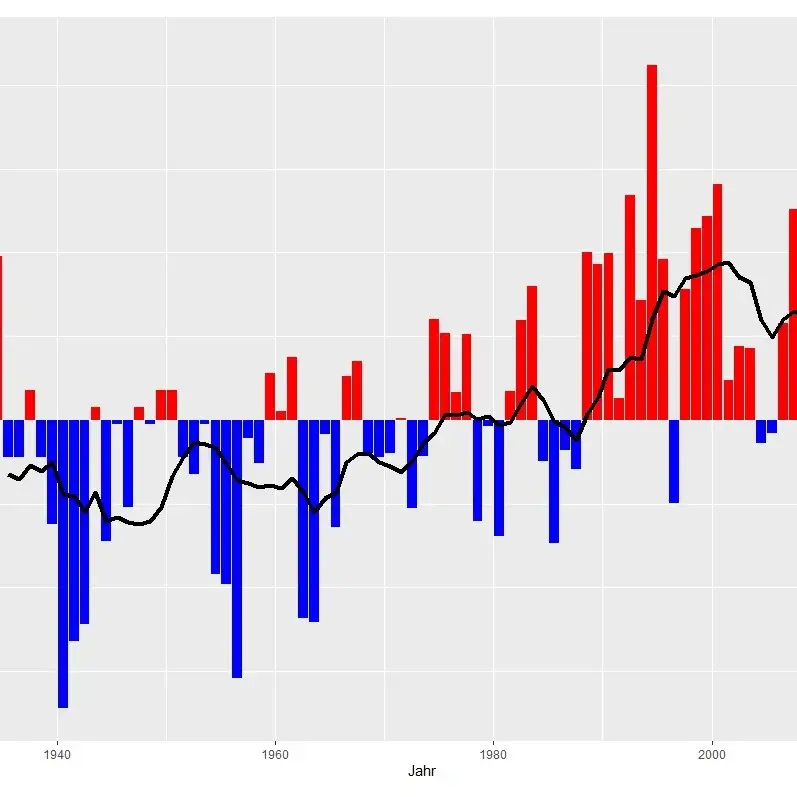With the kind supervision of Professor Tobias Heckmann from the Department of Physical Geography, Rickert’s bachelor thesis not only incorporated the figures from the DWD station, which have been available since 1955, into a statistical procedure, but also used a historical source that predates even the DWD station. The 1955 book “Die Temperaturverhältnisse von Eichstätt/Bayern” (The Temperature Conditions of Eichstätt/Bavaria) by Oswald Menzl contains measurements from 1926 to 1954 taken from a weather station installed at that time on the premises of the bishop’s seminary garden close to the present location of today’s KU weather station.
The result of Rickert’s study is an uninterrupted 95-year time series of temperatures measured in Eichstätt. “This (series) is extremely valuable in order to accurately represent the temperature deviations for individual months, seasons or years,” explains Professor Susanne Jochner-Oette, who oversees the KU weather station with the student working group Wetterschau. Professor Heckmann adds: “We were thus able to determine for the first time, that the mean temperature of 20.4 degrees taken last June, was exactly 3.4 degrees above the mean June temperature in the reference period of 1961 to 1990.”
Jakob Rickert's study shows that the air temperature in Eichstätt has been increasing significantly for about 100 years now, an increase which started gathering speed around the 1980s. The annual mean temperature increased by 0.9 degrees Celsius from 8.7 degrees in the period from 1961 to 1990 to a mean temperature of 9.6 degrees Celsius in the period from 1990 to 2019. At times, this increase was greater than the rise of the global mean temperature. This rise in temperatures especially applied to the summer months, an indication of which is the high number of so-called summer and heat days. These are terms designating days, on which the temperature rises above a threshold of 25 or 30 degrees respectively. In the years between 1926 and 1950, there was an average of only five heat days a year. This number increased to an average of 25 days for the period of 1995 to 2019. This year, there were eleven heat days in June alone.
But it is not only the summers that are getting warmer in Eichstätt, the winters are doing so, too. Whereas in the years between 1926 and 1950 there were on average as many as 28 so-called ice days annually, with an ice-day being defined as a day with sub-zero temperatures, in the years between 1995 and 2019, there were only as few as 17 of these days a year. This year, the spring months of April and May have shown clearly, that even in times of climate change there can be temperatures that are below the month’s average, with this year’s May being 1.6 degrees and June 2.5 degrees below the average of 1961 to 1990. The cause were large-scale weather patterns, which lead to lower temperatures. At the end of May for instance, a large-scale cyclone dominated the skies above Northern Europe, bringing cold Atlantic air to Germany and alternately causing spells of showers, thunderstorms and sunshine.

